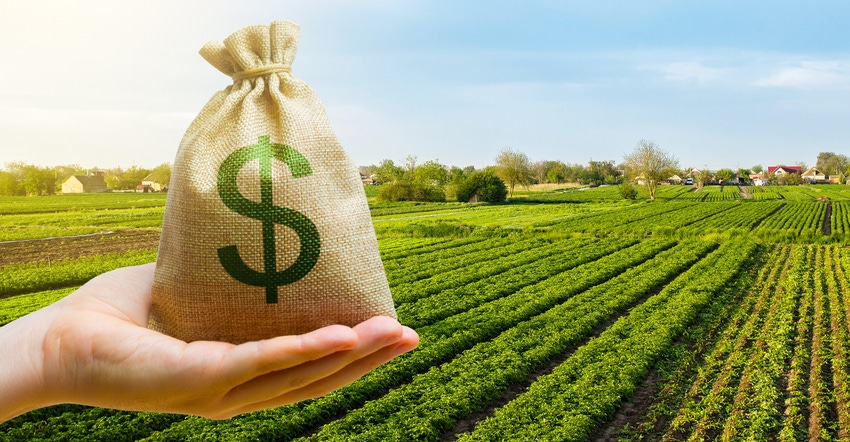
With high commodity prices and increased competition for land, it’s no surprise that cash rental rates are going up across the region.
According to data from the National Agricultural Statistics Service, Ohio has the highest average cash rental rate in the American Agriculturist region at $170 per acre, followed by Michigan at $140 per acre, and Maryland and Delaware with average cash rental rates of $117 per acre.
Pennsylvania’s average rate is $101 per acre, while New York’s is $77 per acre. The lowest cash rental rate average is in West Virginia at $41.50 per acre.
Renting irrigated land costs most in Massachusetts — home to a large cranberry growing industry — at $284 per acre, followed by Michigan at $243 per acre and Ohio at $208 per acre.
Rented pastureland costs most in Maryland at $51 per acre, and costs least in West Virginia at $12 per acre.
The U.S. average cash rental rate is $148 per acre, up $7 from last year. The national average for rented irrigated land is $227 per acre, up $10 from last year. Rented pastureland nationwide averaged $14 per acre, up slightly from last year’s $13 per acre.
How survey is conducted
The NASS Cash Rents Survey is done mid-February to June by obtaining rented acres and cash rental rates from a statistically representative sample of farmers and ranchers.
The target population for the program is all farms and ranches with $1,000 or more in agricultural sales (or potential sales) who rent land from others on a cash rent basis. It’s unclear how many producers were contacted for this year’s survey, but in 2021, the sample size was 260,000 producers.
How to use
You can access the tool and do your own research at bit.ly/2tlaSjS.
You will need to specify “geographical regions” and “years.” In most cases, you will be able to get irrigated and nonirrigated cropland rental rates, as well as pastureland rental rates.
County-level cash rental rates will be released Aug. 26.
Other resources
Of course, there are many resources out there if you’re interested in renting land or want to lease some of your land to another grower.
This Farm Progress article from 2017 has some good tips on how to negotiate a land rental rate.
Some states do their own cash rental surveys. The Western Ohio Cropland Values and Cash Rents survey will be released later this month. The results are summarized for western Ohio with regional summaries for northwest Ohio and southwest Ohio.
NY Farmland Finder has an online checklist for pricing rented acres, as well as a guide for leasing farmland.
Iowa State Extension’s Ag Decision Maker also has a handy guide for computing cash rental rates.
Here are the 2020 cash rental rates by state in the mid-Atlantic and Northeast:
Connecticut
Nonirrigated: $86 per acre, up from $78 per acre
Delaware
Average: $117 per acre, up from $114 per acre
Irrigated: $174 per acre, up from $166 per acre
Nonirrigated: $94.5 per acre, up from $88 per acre
Maine
Nonirrigated: $60 per acre, up from $59 per acre
Maryland
Average: $117 per acre, up from $111 per acre
Irrigated: $201 per acre, up from $197 per acre
Nonirrigated: $111 per acre, up from $103 per acre
Pastureland: $51 per acre, down from $53 per acre
Massachusetts
Average: $106 per acre, up from $97 per acre
Irrigated: $284 per acre, up from $260 per acre
Nonirrigated: $87.5 per acre, up from $78 per acre
Michigan
Average: $144 per acre, up from $138 per acre
Irrigated: $243 per acre, up from $232 per acre
Nonirrigated: $137 per acre, up from $131 per acre
Pastureland: $32 per acre, down from $35 per acre
New Hampshire
Average: $56 per acre, up from $54.50 per acre
Irrigated: $49 per acre in 2021
Nonirrigated: $51.5 per acre (no 2021 data)
New Jersey
Average: $84.5 per acre, up from $82 per acre
Irrigated: $136 per acre, up from $128 per acre
Nonirrigated: $75.5 per acre, up from $66 per acre
Pastureland: $46 per acre in 2021
New York
Average: $77 per acre, up from $69 per acre
Irrigated: $163 per acre, up from $145 per acre
Nonirrigated: $76 per acre, up from $68 per acre
Pastureland: $25 per acre (unchanged)
Ohio
Average: $170 per acre, up from $160 per acre
Irrigated: $208 per acre, up from $199 per acre
Nonirrigated: $170 per acre, up from $160 per acre
Pastureland: $25.5 per acre, down from $26 per acre
Pennsylvania
Average: $101 per acre, up from $94 per acre
Irrigated: $162 per acre, unchanged
Nonirrigated: $100 per acre, up from $93 per acre
Pastureland: $40.5 per acre, up from $40 per acre
Vermont
Average: $58.5 per acre, up from $52.5 per acre
Nonirrigated: $58 per acre, up from $52 per acre
West Virginia
Average: $41.5 per acre, up from $37 per acre
Pastureland: $12 per acre, down from $13.5 per acre
About the Author(s)
You May Also Like






